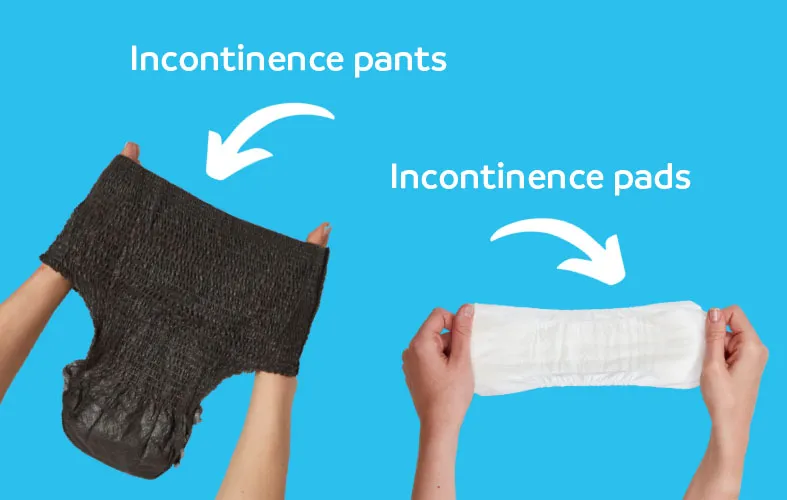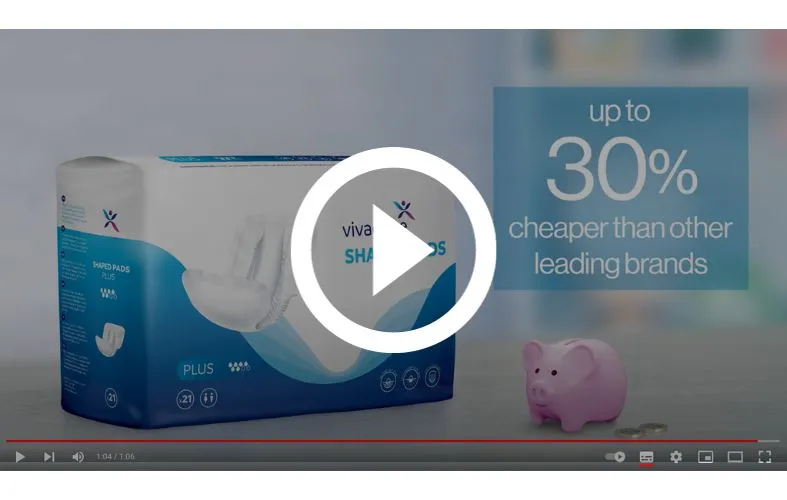
Share this page with friends
What’s the difference between incontinence pads and pants?
Today, we’ll be talking about some of the differences between incontinence pads and incontinence pants. They’re two very different products with two fairly similar names. So, if you’re new on your incontinence journey and need a bit of clarification, we’re here to help.
What are incontinence pads?
Incontinence pads are a staple of the bladder weakness industry. They’re likely the first thing that pops to mind when you even think about incontinence products. They’re long, rectangular shaped and designed to fit the gusset area of your body. Pads tend to fall into two categories:
Large shaped pads are a heavy duty option, built specifically to handle big leaks. Their huge absorption capabilities and traditionally bulky design mean they’re geared mostly toward people with chronic incontinence and people that are less mobile. Large shaped pads are trickier to put on than disposable pants or discreet pads and are commonly applied by carers rather than the person experiencing incontinence.
Discreet pads are probably more like what you’re used to seeing. Picture a small, discreet, absorbent shield that fits snugly in your underwear to absorb smaller leaks. They’re held in place by an adhesive strip and they’re perfect for people on the go who want their incontinence to remain hidden.

What are incontinence pants
Now, let’s take a look at incontinence pants. They’re a more robust solution for people that want a combination of great protection, comfort and discretion. Unlike the pads we mentioned above, incontinence pants are much closer to regular underwear. Pants are pulled up and ready to go just like normal underwear; this familiarity makes them a popular choice. Just like pads, they fall into two main categories:
Disposable incontinence pants have a much higher absorbency, so they’re perfect for people experiencing those moderate to high level leaks. Once they’re full or you’re finished with them, you simply tear the sides and pop them in the bin. Due to their higher absorbency, they look closer to nappies than their washable counterparts. They offer a snug fit, full coverage and some leading brands like Vivactive feature anti-leak cuffs and Triple Layer Lock technology to absorb liquids more than twice as fast.
Washable incontinence pants are designed with maximum discretion in mind. This means they have a lower absorbency level, geared specifically for light leaks. But, they also look almost identical to regular underwear. They feature a built-in waterproof lining to make sure they don’t leak, so you can crack on with your day.

Quality matters, so does cost.
Choosing a good quality incontinence product should really be at the top of your list of things to think about when considering your purchase. But, you also needn’t be paying over the odds just to feel secure and fresh throughout the day. You shouldn’t be forced to choose between buying the ingredients for a fancy dinner with your wife on a Friday night and a pack of incontinence pants.
Supermarkets are the worst when it comes to overcharging people for incontinence products. You can find the same items online (or even better ones), cheaper and in stock, without having to get in the car and drive all the way to the shops.





